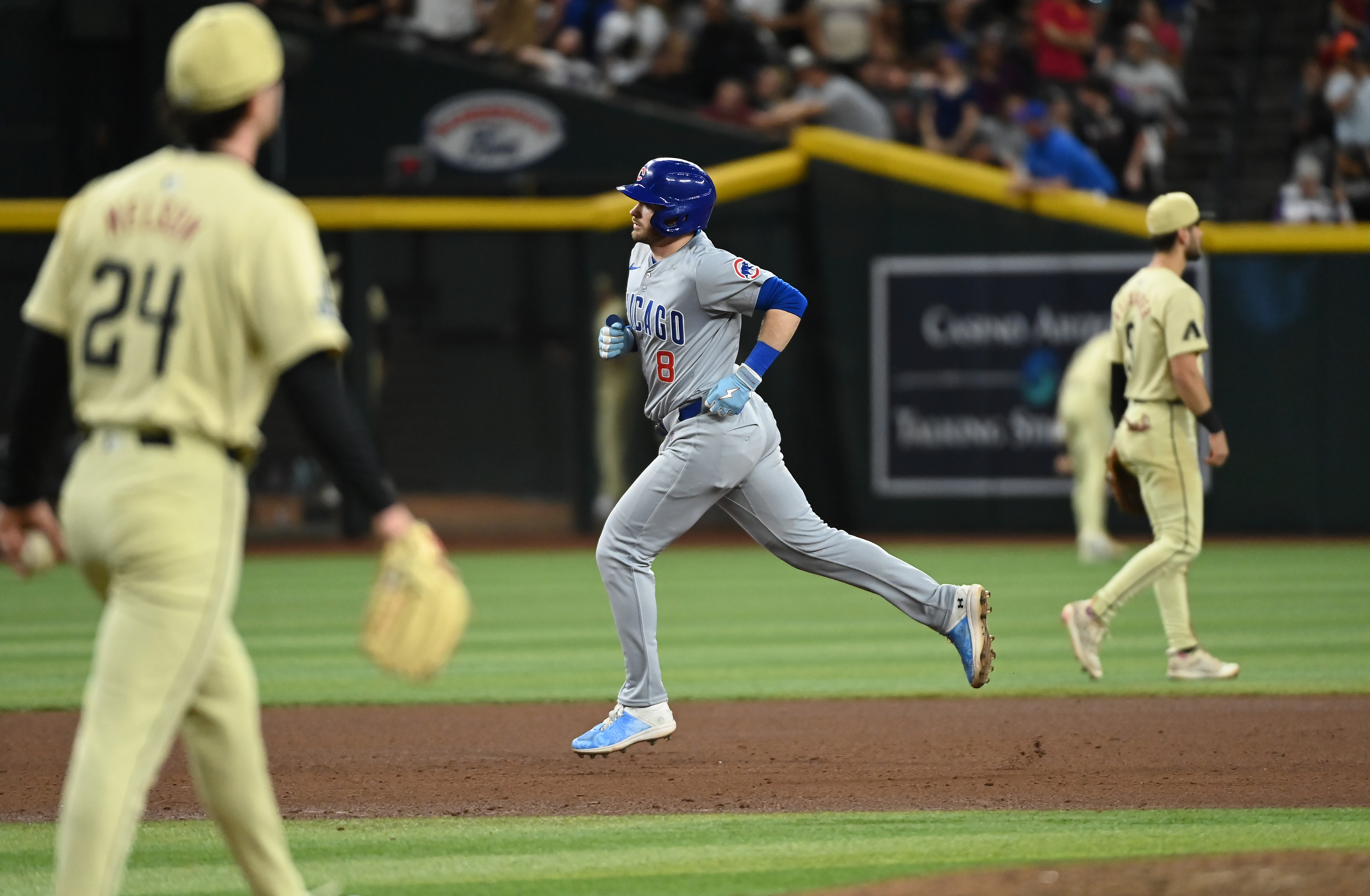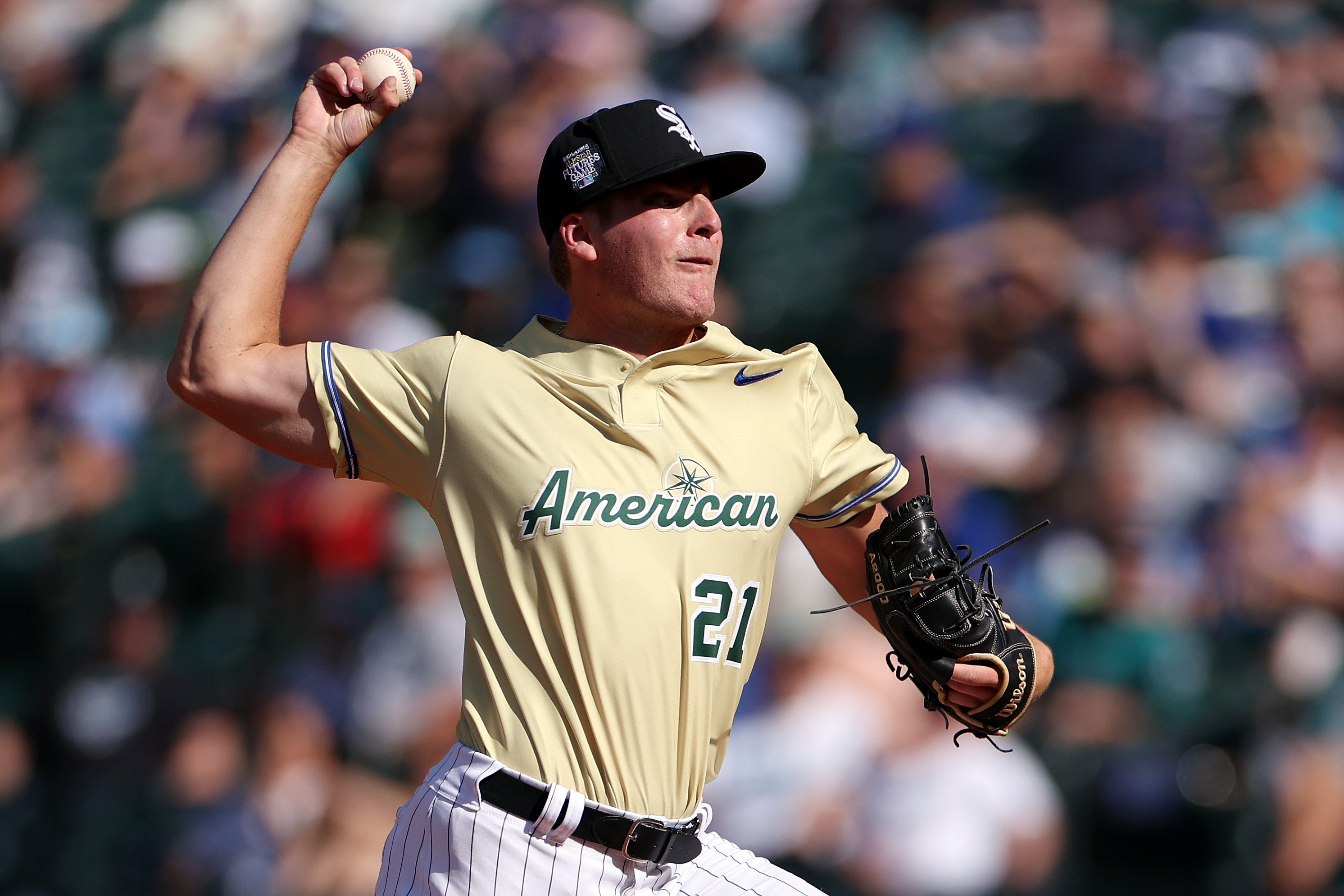
MESA, Ariz. — While advances in sports medicine have turned Tommy John elbow surgery into an almost-routine procedure, pitchers who undergo shoulder surgery have a much worse chance of not only returning to the major leagues, but returning effectively.
BaseballEssential.com counted 27 pitchers who had shoulder surgery from 2010-2013, and only 15 of them returned to the major leagues. Having an operation on one’s shoulder leaves him with just over a 50 percent chance of pitching again at baseball’s highest level. Cubs reliever Clayton Richard is one of the lucky ones.
The 32-year-old left-hander underwent shoulder surgery in 2013, then had thoracic outlet surgery in 2014. The once-promising pitcher, who was an important piece of the White Sox blockbuster trade for Jake Peavy in 2009, went over two years between appearances in the major leagues.
The Cubs plucked him from the Pittsburgh Pirates’ Triple-A affiliate to make a spot start last Fourth of July, used him two more times, and designated him for assignment. He cleared waivers, returned from the minor leagues for one more start, then was moved to the bullpen. And soon after, the old Clayton Richard was back — just pitching in a different role.
“Later on in the season, he was like the Clayton Richard that I faced,” Cubs catcher Miguel Montero, who while with the Arizona Diamondbacks faced the ex-San Diego Padres pitcher 19 times, said. “He was throwing it harder than the Clayton Richard I faced, too. The guy worked his butt off to be where he’s at right now again.”
[SHOP: Gear up, Cubs fans!]
In 18 innings as a reliever last year, Richard had a 3.38 ERA and issued only two walks and one home run. He was both a long reliever and one-out guy, providing manager Joe Maddon with another elastic arm out of the bullpen to help manage the back end of the Cubs’ starting rotation.
MLB
Richard hadn’t worked regularly in relief in six years and admitted the transition from being on an every-five-days schedule to not knowing when he would pitch was difficult at first, but he was more than willing to take on the challenge.
“I knew there was going to be an opportunity to pitch,” Richard said. “That’s all I worried about. And really, at this level, that’s all you can worry about.”
To rehab from those twin surgeries, Richard went back to his hometown of Lafayette, Ind., where he starred as both a baseball and football player and earned a football scholarship to the University of Michigan. He first made a name for himself off I-65 between Chicago and Indianapolis — this is a guy who was rated by Rivals.com as a four-star pro-style quarterback recruit and was named Indiana’s Mr. Football and Mr. Baseball in 2003, beating out three-star Valparaiso wide receiver and Notre Dame commit Jeff Samardzija.
While back home, Richard returned to his prep alma mater, McCutcheon High School, and worked out with the baseball team there. He said that was an experience that wound up being incredibly important to his grueling rehab process.
“I just came to appreciate the game,” Richard said. “Just having fun going out, taking batting practice, playing the field with high school kids that year I was rehabbing, I started to enjoy the game more and not worry about all the other stuff that goes into it.”
Richard said from the clubhouse at the Cubs' spring training facility he still draws upon that time spent rehabbing and working with his former high school baseball team.
“Just that feeling of going out and playing, I think some of us kind of lose that every now and then,” Richard said. “It was nice to have that kind of re-start for myself where it was just baseball. There was nothing else to it other than baseball.
I don’t wish that experience on anybody,” Richard added, “but it was good for me.”
Richard looks slated to be part of a Cubs bullpen teeming with flexibility. He, Travis Wood, Trevor Cahill and Adam Warren are all former starters capable of throwing multiple innings, which is especially important given Maddon’s protection of Kyle Hendricks and, later, Jason Hammel last year, who were often pulled at the first sign of trouble or before their third time through a lineup.
[MORE: Jake Arrieta good with Cubs’ plan to limit workload]
This bullpen is set up to keep itself and the starting rotation fresh throughout the season, but also deliver when used favorably in high leverage situations. Maddon offered an example: When the wind is blowing out, Richard — who threw his sinking fastball about 80 percent of the time last year and generated a ton of ground balls — would come in. But when the wind is blowing in, Wood — who’s more of a fly ball pitcher — could enter.
“(Richard) fits on any team as far as I’m concerned,” Maddon said. “And I don’t think there’s any hitter in the major leagues who says, Oh good, Clayton Richard is coming into the game.”
Montero echoed Maddon’s assessment, calling Richard an “uncomfortable” at-bat. His fastball/sinker velocity is back to where it was well before he had surgery (he averaged 91 miles per hour on it in 2015; the last time he hit that mark was 2010), and his ability to generate ground balls and limit walks and home runs made him an effective pitcher down the stretch last year.
A relief role probably wasn’t one Richard envisioned himself being in back when he was posting sub-4.00 ERAs and throwing 200-plus innings a year for the Padres. But shoulder surgeries are tough from which to come back. And Richard wouldn’t have made it back — as so many other players who underwent similar procedures haven’t — without that willingness to change.
“You’re never the same pitcher,” Richard said. “I feel like I’m an improved version of that pitcher. If I’m not able to make adjustments I’ll be done. I think that’s the same for everyone. There’s no one that’s so good that they can’t survive without making adjustments.”


